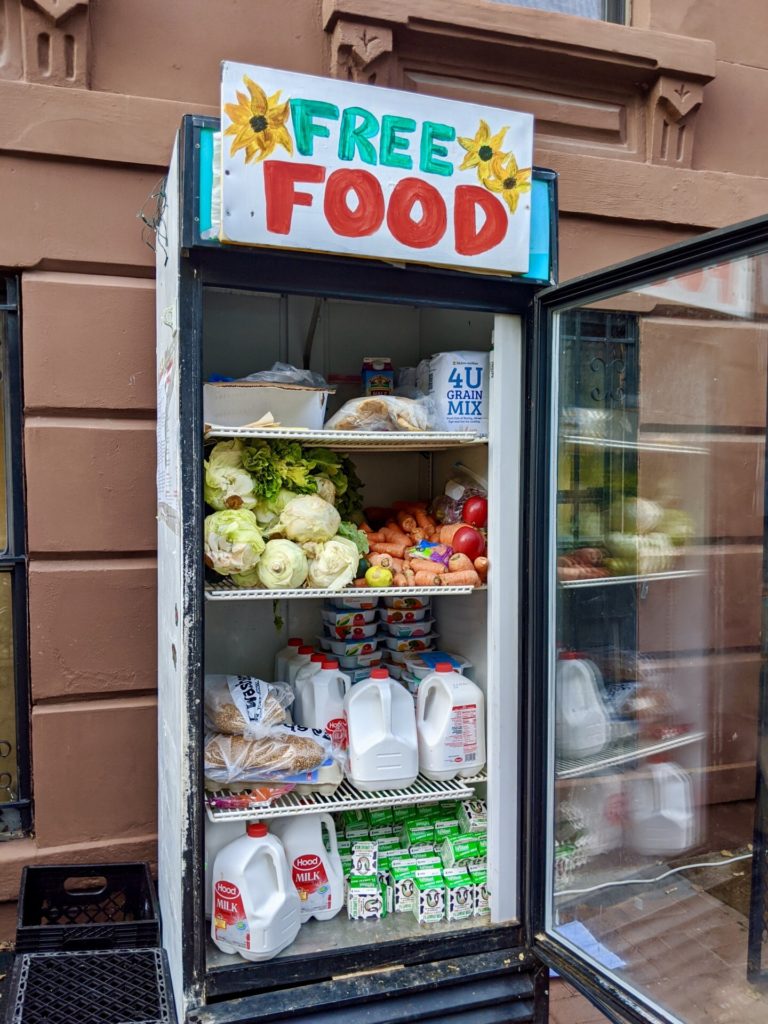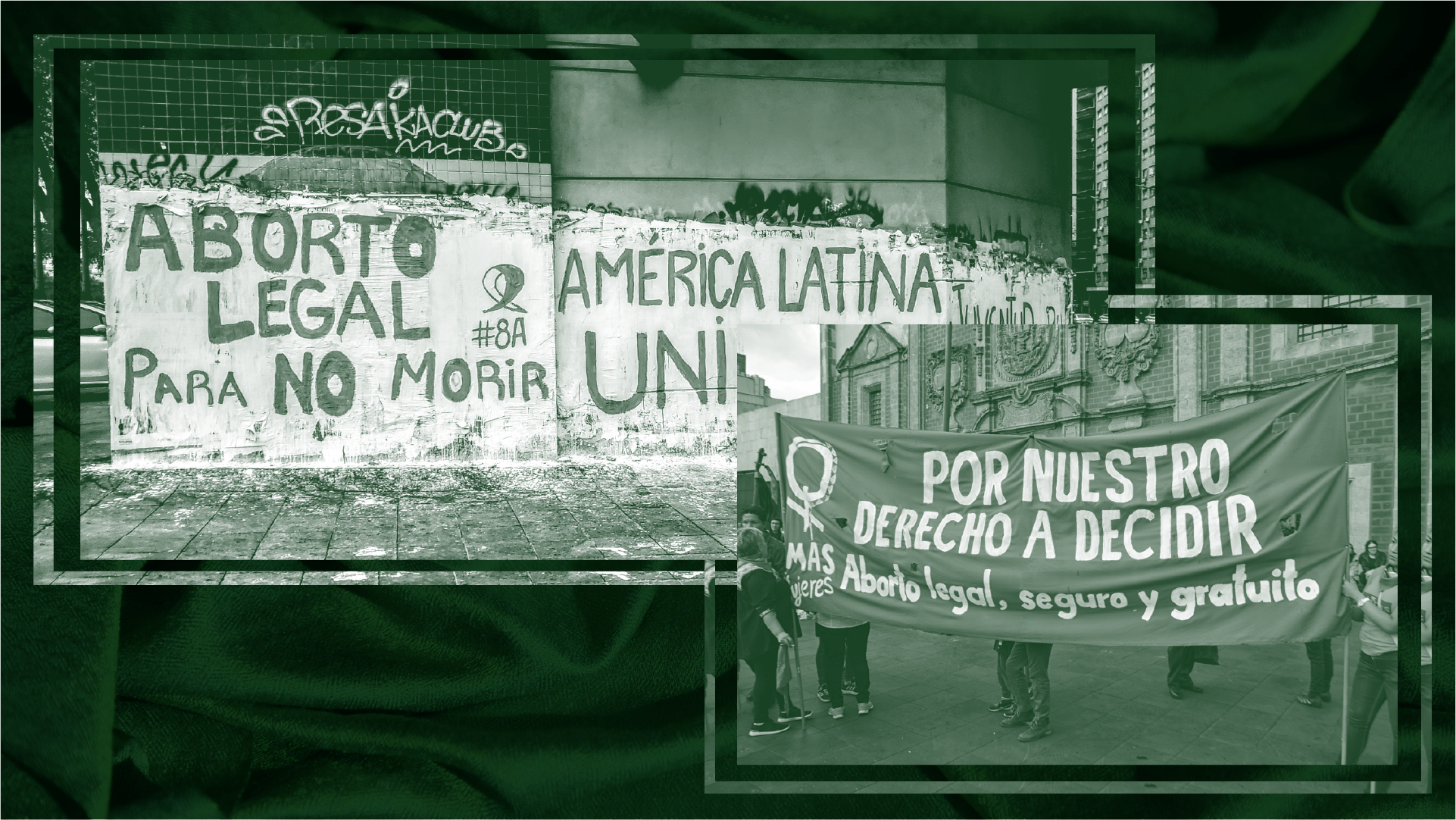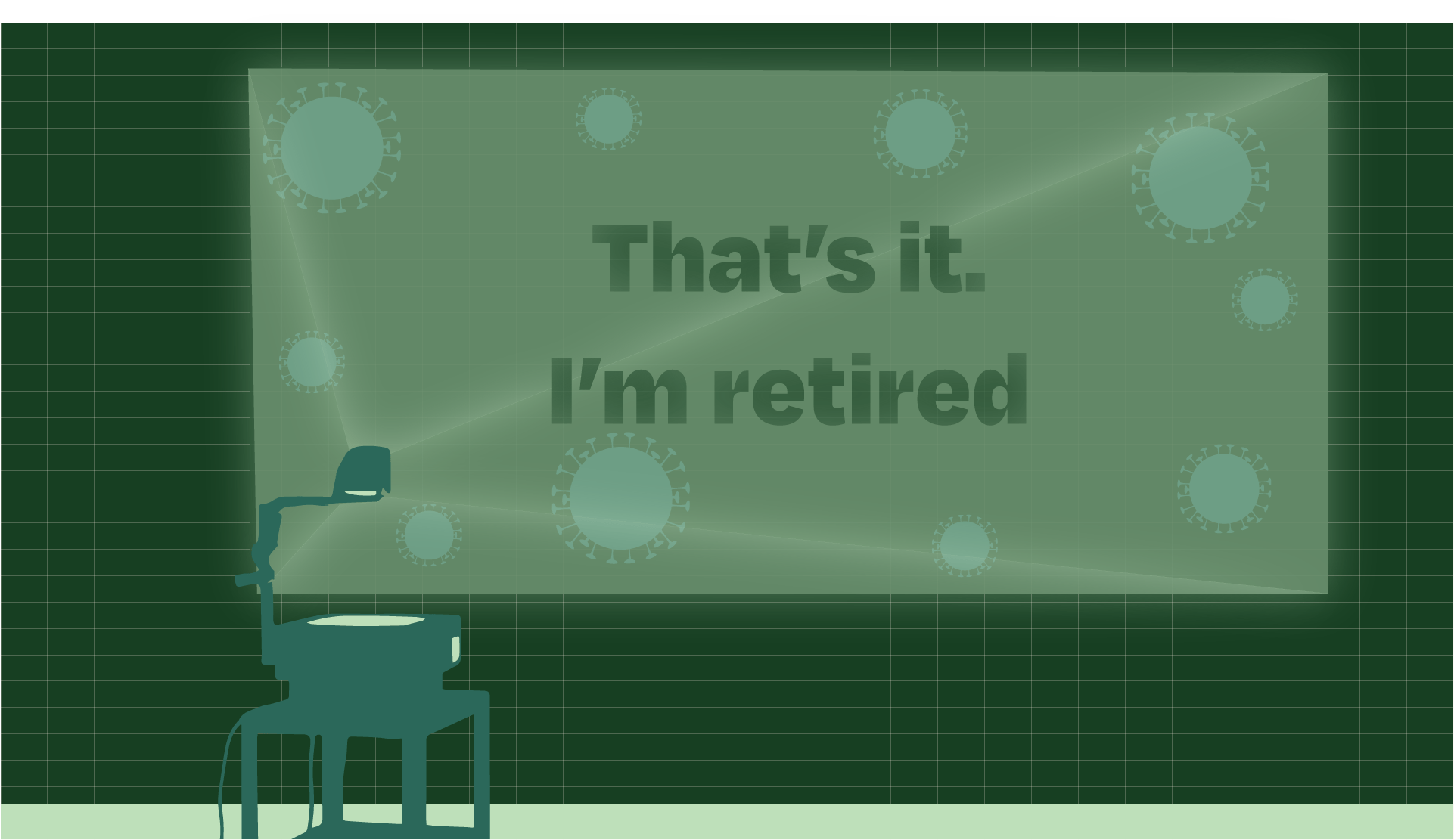
How to Start Your Own Community Fridge
Local organizers share tips on setting up a fridge and getting involved in the effort to fight food insecurity.
The outbreak of COVID-19 in the United States wreaked havoc on minority communities, causing long-existing systems of racism and oppression to permeate deeper into the lives of the country’s most vulnerable. As it transformed New York into a global hotspot for the disease, the virus caused the city’s growing food insecurity problem to get even worse. The pandemic exposed how significantly disproportionate the problem is for low-wage and minority communities, increasing the number of New Yorkers left without access to affordable, healthy food from around one million to more than two.
In an effort to diminish the impact of the issue, local activists and community organizers took action by installing community fridges in neighborhoods across the city. By offering fresh produce, prepared meals, and pantry staples that are free to all, the fridges have become an increasingly popular mutual aid effort to combat food insecurity and food waste.
Sara Allen, a volunteer with The Friendly Fridge BX was inspired when they saw a friend’s Instagram post about the first community fridge in Manhattan. Just three days later, they had a fridge up and running in their own neighborhood. “Regular folks can do it,” Allen told The Interlude.
But where should you start?
After speaking with several organizers from neighborhoods across the city, The Interlude has put together the following guide to starting your own community fridge.
Do Your Research
First, you should familiarize yourself with the core concepts that make community fridges effective. Read up on the ideas behind mutual aid systems, a community-centered method of direct action that encourages individuals to care for each other and work together to address their community’s most pressing needs. Think about how to promote solidarity rather than charity. In efforts of solidarity, unlike in charity, the savior complex is eliminated. There is no one in charge and no policing of how people choose to engage. Everyone can give and everyone can take.
“There’s a lot of pride, shame, and guilt [associated with] anything that is given away for free,” explained Sade, an activist, artist, and volunteer with The Harlem Community Fridge. “People become a little suspicious — ‘Is it good enough?’ Or there are other attachments, like if you accept something that’s free, that means that you’re poor…[s]o there’s a lot of stigma and preconceived, indoctrinated ideas that we as a society have to work through.”
Developing a foundational understanding of these ideas is necessary to building an effective mutual aid program, such as a community fridge.
Connect With Other Organizers
Most community fridge organizers are very active on social media, especially Instagram (All of the organizers that The Interlude spoke with for this guide were contacted via Instagram.) They make themselves available to answer questions or help connect interested volunteers with resources. Sg Guerrero, an organizer who helped start The Uptown Fridge in Washington Heights, initially saw an Instagram post from the activism network In Our Hearts NYC that was offering a free fridge. IOH provided Guerrero with the fridge and even coordinated a group chat with other Washington Heights residents looking to start a community fridge. IOH encourages anyone interested in starting a community fridge to message their Instagram account or send an email to inourhearts@gmail.com. Other networks, like FREEdge, offer resources like micro-grants, templates for informational flyers and posters, and a comprehensive guide to understanding and building community fridges.

Photo by Opheli Garcia Lawler.
Take Care of the Logistics
After you’ve reached out to other organizers and volunteers to start building a team, it’s time to focus on the logistics — how will volunteers communicate? Where can the fridge be plugged in? When will the fridge be cleaned and restocked? Most organizers recommend starting a group chat on a messaging platform like Signal so that team members can easily contact each other and share information.
Then it’s time to find an outlet for the fridge. The majority of fridges in New York are plugged in at a small local business like a deli or a bodega. While looking for an outlet for The Friendly Fridge BX, Sara and their partner Selma Raven simply walked up and down the block introducing themselves to business owners and asking for their help providing electricity. Some people will be very skeptical and unwilling, they both warned. But just keep trying and you’ll find someone who is excited to be involved. Extension cords will be necessary, but make sure everything is connected safely. Don’t plug an extension cord into another extension cord, and make sure the outlet is not being used to power other appliances.
Once the fridge is plugged in, allow 24 hours for it to cool before stocking with food. All food in the fridge should be clearly labeled with expiration dates and regular cleaning of the fridge should be coordinated by team members. Aditi Varshneya, another organizer with The Uptown Fridge, suggests starting with a Google Spreadsheet that displays who can take care of specific duties on what dates and times. It’s also important to appoint one or two people to oversee monetary donations, which community members typically contribute via Venmo. Lastly, make your fridge visible. Use bright colors and encouraging messages to communicate to anyone passing by that the food inside is free and available to everyone.
Involve Your Community
The inclusion of the whole community is the most important step to a successful fridge. Make connections with bakeries, grocery stores, restaurants, corner stores, and food pantries in the area and offer to coordinate regular pick up times to collect donations. You can also ask these businesses to put up posters with information about the fridge. But always keep in mind that no donation is too small. Encourage friends and neighbors to drop off that stray can of beans they don’t need or check for buy-one-get-one deals at the grocery store and donate the extra item.
“We can all do something. Everybody can contribute,” Sade told The Interlude. “It’s not just for businesses with money. Maybe one day you’re leaving something and the next day you come and pick something up. There’s no questions asked.”
Commit to Doing the Work
Community fridges are about more than feeding the hungry. The fridges fight issues deeply ingrained into American society, like food insecurity, food waste, and food apartheid — the systemic inaccessibility of affordable, healthy food options that disproportionately affects black and brown communities. Anyone who’s thinking about starting a community fridge in their neighborhood should consider these issues and be ready to commit to long-term activism in the form of re-educating one’s community about our country’s food systems.
“[We’re addressing] health disparities, accessibility of healthy food options, and offering people better ways to eat,” Sade said. “When you do this kind of work, you’re really helping to mend and build bridges. Food is the connector between all people.”


